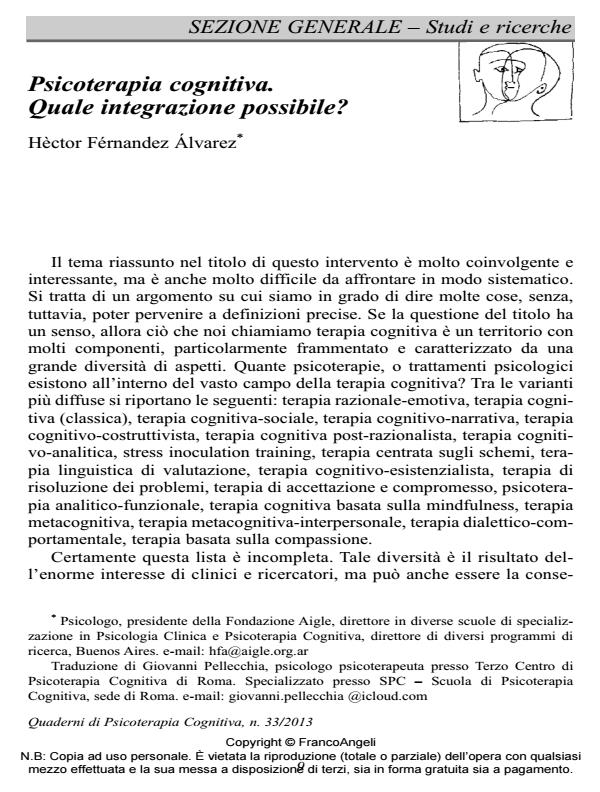Cognitive Psychotherapy. Which kind of integration is possible?
Journal title QUADERNI DI PSICOTERAPIA COGNITIVA
Author/s Hèctor Férnandez Alvarez
Publishing Year 2013 Issue 2013/33
Language Italian Pages 10 P. 9-18 File size 119 KB
DOI 10.3280/QPC2013-033002
DOI is like a bar code for intellectual property: to have more infomation
click here
Below, you can see the article first page
If you want to buy this article in PDF format, you can do it, following the instructions to buy download credits

FrancoAngeli is member of Publishers International Linking Association, Inc (PILA), a not-for-profit association which run the CrossRef service enabling links to and from online scholarly content.
In this article is shown a re-riding of the historical path of psychology and cognitive psychotherapy. Cognitive psychotherapy is a field with several components, particularly fragmented and characterized by a wide multiplicity of aspects. Discussing if integration is possible it at first requires the comprehension of the differences and, most of all, the origins of these differences. The aim of this work is to give a referential context that allows to understand on which basis is nowadays possible to think about different models’ integration. The interesting perspective might be that to apply to cognitive therapy those lines which have dominated the more general integration field. We have identified four main lines: a) common factors; b) technical eclecticism; c) integrative assimilation; d) theoretical integration.
Keywords: Cognitive psychotherapy, integration.
Hèctor Férnandez Alvarez, Psicoterapia cognitiva. Quale integrazione possibile? in "QUADERNI DI PSICOTERAPIA COGNITIVA" 33/2013, pp 9-18, DOI: 10.3280/QPC2013-033002